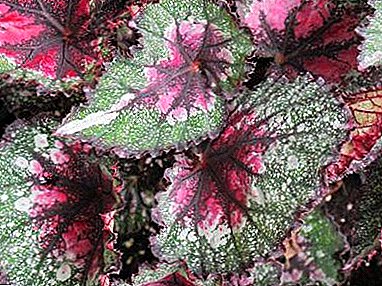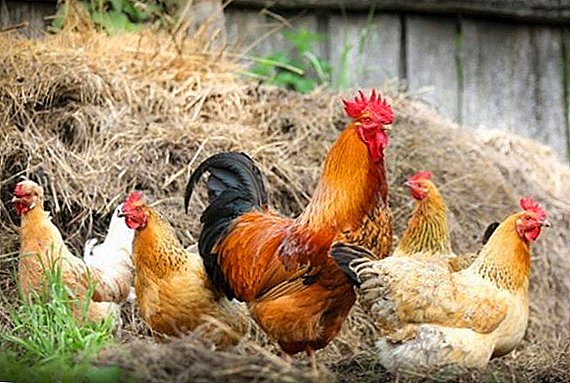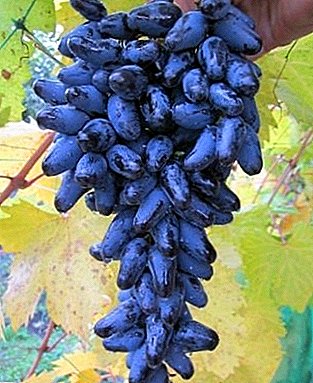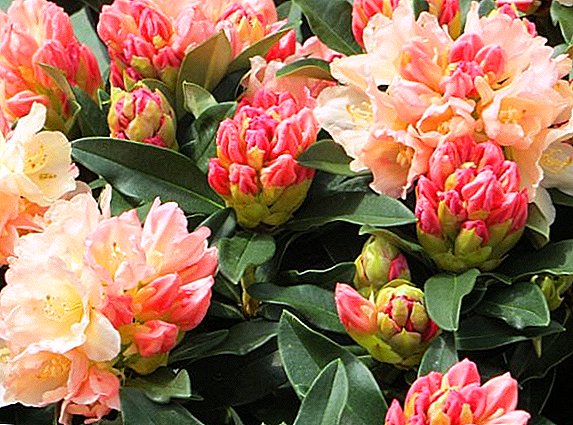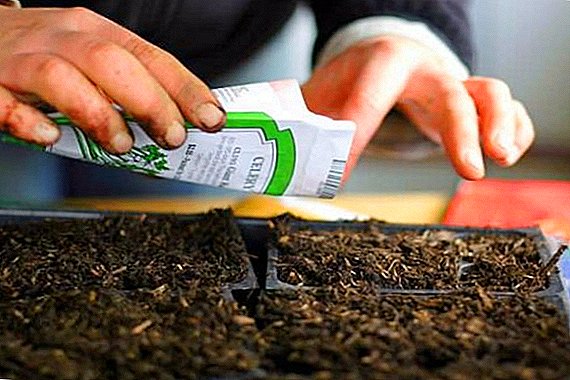
Even indoor plants can infect insect pests. During such attacks, the integrity of the root is disturbed, the green mass fades, the flowers fall, the plant begins to slowly die. One of the most dangerous pests is the shield.
Due to the durable shell covering the body, the parasite is resistant to many insecticides. In the article we will tell from where on the houseplants is a scout taken and how to fight it with folk remedies and chemical preparations.
General information
Shchitovka is a member of the Hemiptera family, part of the Pseudococcide squad. The pest got its name because of the wax shell that covers its body.. This shell can be easily separated: only the unprotected body of the parasite will remain. There are several varieties of scales.
After birth, the larvae are mobile, they are in search of food.. Later individuals attach to one place, begin to drink vegetable juice. The protective wax shell also appears over time. Shchitovki prefer garden plants, indoor amaze less. Most often, the parasite attacks citrus, bromelio, palm crops. The pest eats also juices of poisonous plants.
Causes and signs of appearance
The main reason for infection with the shield is improper care, inappropriate conditions for keeping plants.
Where do pests come from?
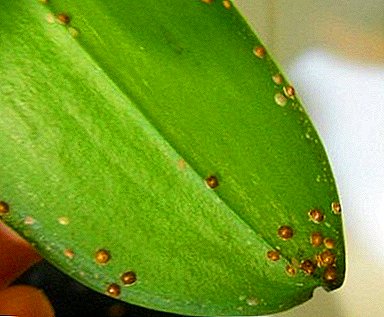 Excess moisture, or vice versa lack of water.
Excess moisture, or vice versa lack of water.- Lack of nutrients.
- Dim (no sunlight).
- Dry air - the plant ceases to produce antibodies that provide protection against pests.
- Contaminated soil, infected new plants.
The most dangerous period for possible infection is winterSince at this time the composition of the sap of plants is changing, it becomes ideal for feeding and rapid reproduction of parasites.
Symptoms of infection
At the initial stage, there are no obvious symptoms: the scythe moves rapidly, it can be detected through a microscope. Adult pest species look like round brown scales where a leaf stalk adjoins a branch or trunk. With an increase in the parasite population, symptoms are progressing. The main one is a sticky drop on the leaves, which flows down to the window sill.
Insect Controls
When infesting houseplants with flakes, it is possible to fight insects using either traditional methods or mechanical or chemical means (all methods of dealing with such a pest are described in detail here).
The final option is selected depending on the pest population, the number of infected plants and the degree of damage. Modern chemicals effectively destroy parasites in just a few applications.. At the same time the plant is safe. It is also advisable to combine chemicals for the best and fastest results.
| Title | Description | Advantages and disadvantages | Application features | average price |
| Drug 30 | Insectoacaricide. Destroys parasites without harming the plant. | It has high efficiency, showing equally good results every year, which indicates the inability of pests to adapt to the preparation. Cons - a great adaptability of the drug for spraying trees, shrubs. | Spraying sheets. The dosage depends on the type of plant: 100 g per 10 liters of water for domestic plants. Use the solution for 2 hours after preparation. | A package of 4 g - 90-120 rubles. |
| Aktara | Included in the class of neonicotinoid drugs that affect nicotine-acetylcholine receptors. The parasite dies in a day. | Pros - efficiency (sunlight, air temperature do not affect the result), the destruction of eggs and larvae. | Working solution you need to water the soil and spray the plant. Solution: on 2 l of water 1 bag (1-1.4 g). | Package 1.4 g - 10-30 rubles. 1 liter - 9000 rub. |
| Bankol | Contact action. Causes pest paralysis of the nervous system. Parasites die in 1-2 days. | Pros:
Cons - the drug is not suitable for processing gardens. | To prepare the working solution in 1 liter of water dilute 0.5 g of the product. | 10 g - 30-40 rubles. |
| Mospilan | Japanese means of contact-gastric action. Active ingredient - cytomacid. It spreads throughout the entire plant system, penetrates the body of the parasite with the juice. | Pros:
Cons - there is no dosage in the instruction for indoor flowers (only for garden and garden crops). | Working solution: 2.5 g per 10 l of water. This is enough for processing 200-250 m2. | 1 kg - 1800 rubles |
| Etisso blattlaus-stricks | This is a green stick that is stuck in the ground. The most expensive of these funds. Produced in Germany. Contains not only active substances for pest control, but also fertilizers that stimulate growth. | Pros - broad action (protection and struggle). Minus - the effect is possible only in the active period of the life of the plant (growth, flowering). | Stick fertilizer stick in the ground next to the plant. The time of complete dissolution of the sticks is 5-6 weeks. | 10 pieces 600 rub. |
| Actellic | High-speed tool, the effect of which comes in a few minutes. It has fumigation activity: parasites die from chemical vapors. | It has a long period of preservation of protective action. | Suitable for tillage through the soil, for spraying the plant. Working solution: 2 ml per 1 l of water. | 50 ml 220 rub. |
| Bictosibacillin | The tool contains a bacterial complex. It affects the intestinal system, parasites die within a few days. | Odorless and toxic substances in the composition, is actively used for the treatment of domestic plants. Cons - repetition of treatments to achieve the effect, at low temperatures, the properties of the drug are lost. | For 5 liters of water you need 35 ml of the substance. | 20 g 30 rub. |
How to fight folk remedies?
 Before you fight the pest folk remedies, you need to prepare a houseplant. With a slight lesion, inspect the leaves and wipe with a cotton pad dipped in soapy water..
Before you fight the pest folk remedies, you need to prepare a houseplant. With a slight lesion, inspect the leaves and wipe with a cotton pad dipped in soapy water..
Also useful will be a warm shower, after which the leaves need to hold a toothbrush - this is a mechanical method of struggle. For better effect, the brush can be dipped in diluted alcohol with water (2: 1).
Components:
- 50 ml of 3% hydrogen peroxide;
- 1 l of water;
- 2 tbsp. alcohol;
- 2-3 drops of liquid soap or dishwashing detergent.
Components dilute in water until completely dissolved. Spray the plants from the spray. It is better to prepare such a mixture immediately before spraying, in order to avoid oxidation.
Effective recipes
- Garlic tincture - the most famous remedy against this pest.
To prepare you need:
- Grind 1 medium head of garlic and fill it with 1 liter of water.
- Withstand 7 days.
The resulting infusion sprayed the plant. It not only kills parasites, but also works as a fertilizer.
- Celandine tincture - A powerful natural immunomodulator.
The only drawback is the sharp smell when cooking, so it is better to do such a decoction in the open air. On 700 g of grass you need 5 liters of water. Infusion can be poured at the root or spray flowers.
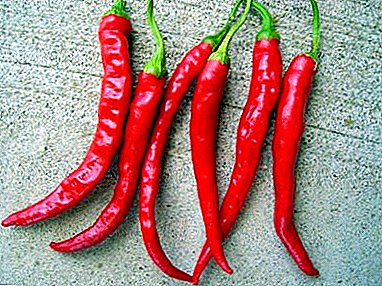 Pepper.
Pepper.- 50 fresh bitter pepper boiled in 0.5 liters of water for 3-5 minutes.
- Add water to the original volume.
- Cover and insist day.
- Next, strain, use for spraying.
- Onion.
Cut 1 medium onion, pour a glass of warm water for 5-7 hours. In the resulting infusion, moisten cotton pads and wipe the leaves.
- Tobacco.
Tobacco pour hot water in a ratio of 1:10, leave the solution for a day. Before use, add water (half of the resulting infusion), then added to the soil or sprayed. For a better effect, use clean, shredded tobacco sheets.
Prevention
It is possible to protect plants from pest attacks by regularly airing the premises, observing the balance of light and water. When buying new plants, it is important to follow the quarantine: keep them separate for 2-4 days.
Important rules for gardeners and growers:
- Regularly carefully check the leaves for the presence of parasites or traces of their presence.
- Before contact with plants, you must wash your hands, as the shield can be transferred to them.
- Rinse the sheets more often under running water (the shield does not like moisture), the soil should be covered at the same time.
- Do not place the flower in the open sun, it can only harm him. It is enough to pick up just a warm place.
Shchitovka is a dangerous pest for garden and indoor plants., but with timely detection, you can do without losses. Regularly carry out preventive actions, do not forget about the general rules of care: watering, feeding, strengthening the root system.


 Excess moisture, or vice versa lack of water.
Excess moisture, or vice versa lack of water. Pepper.
Pepper.